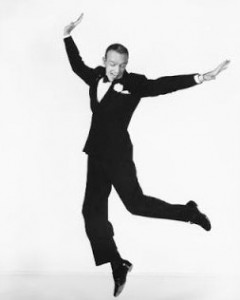Core support from an Alexander point of view….
Engage your core! Is that what it takes to have a strong spine and good posture? What the heck is ‘the core’, anyway?! Let’s be Alexandrian and take the holistic view. We don’t work as a collection of parts, but as an integrated whole. If we grip one bit of ourselves, it will affect us from head to toe. If you pull your navel to your spine and hold it tight, your ribs and diaphragm get stuck (you’ll have trouble breathing) and the whole outer shell of torso musculature will tighten (you’ll have trouble moving). Hm, bit of a problem there, when what we really want is firm and elastic upright support with full mobility and easy breathing!
Let’s consider the intricate weave of the postural support system. In the following section I’m going to borrow liberally from the wording of an excellent article, Redefining the Core, by my colleague Joan Arnold, an Alexander Technique and yoga teacher in NYC. (Do follow the link to her article; it’s worth it.) The abdominal muscles are layered. We’ll start with the outermost. Rectus abdominis runs straight up and down on the front of the torso, the so-called ‘6-pack’. The obliques run diagonally, wrapping around the torso in two layers. Transversus abdominus, the deepest layer, runs horizontally all the way around, connecting to the spine. Transversus helps to contain internal organs and truly does belong to the elite postural support club, often invoked in any discussion of ‘the core’. But it doesn’t stop with transversus! Look deeper still, to muscles that you can’t directly feel or engage which also play key roles in your upright support ensemble…. Multifidus: Very deep muscles close to the spine link one vertebrae to another. They support us to stand, sit well and initiate larger movements. The diaphragm is the primary muscle of respiration, a mushroom-shaped structure that nestles under the ribcage, attaching all along the bottom of the ribs as well as to the lumbar spine. It flattens downward with each inhale as the ribs expand outward and air flows into the lungs, and rises up inside the ribcage on each exhale, helping the air move upward and out. Yup, breathing collaborates with postural support musculature. The psoas connects to the diaphragm and lumbar spine at its top end and to the inner thigh at its bottom end, and some experts consider it part of the postural support network. By interweaving with the diaphragm at the lumbar connection, it participates in every breath (i.e. tighten the legs = constrict the breath.) The web of muscle that forms the pelvic floor helps support the internal organs and connects to fascia in the body’s front and back that indirectly link all the way up to the base of the skull. It mirrors the movement of the diaphragm. So, what makes this amazing postural support network turn on?
- Gravity: by sending our weight toward the ground, gravity stimulates our ‘anti-gravity’ system, so that we don’t hit our heads on the planet.
- Being awake(as opposed to asleep or unconscious; why you topple if you nod off while upright).
- Intention: Habit is our default. Conscious intention is the Alexander opportunity!
OK:
 Without gripping my outer shell of musculature, I can let myself spread toward the support underneath me, let myself buoy upward and outward, and allow my ribs to move. Voila, the inner spring can work!
Without gripping my outer shell of musculature, I can let myself spread toward the support underneath me, let myself buoy upward and outward, and allow my ribs to move. Voila, the inner spring can work!
And, if the task requires an increase in muscular tone as it does when we jump into the air…or get ready to dive or sprint, or move into the ‘chair pose’ in yoga class….

If we can:
- release to our full volume
- send head away from feet
- allow ribs to move
- aim movement through space clearly
our clever nervous system will dial up just the right degree of tone. When it works, we’re springy and elastic. We don’t have to micromanage individual muscles. Phew!
Sculpture: ‘Apoxy’ by Michaela Hauser-Wagner

MOST EXCELLENT Tully 🙂
Thanks, Annie! I’m glad it strikes a chord with you!